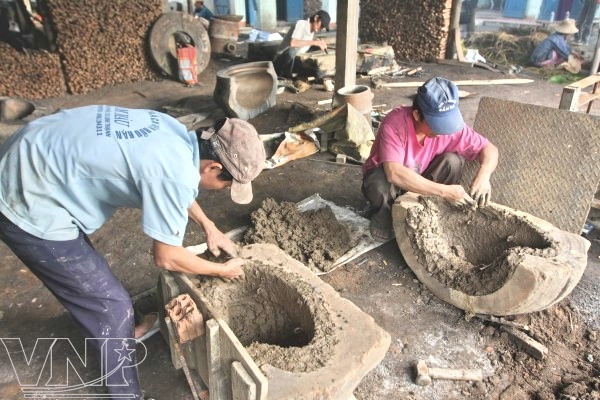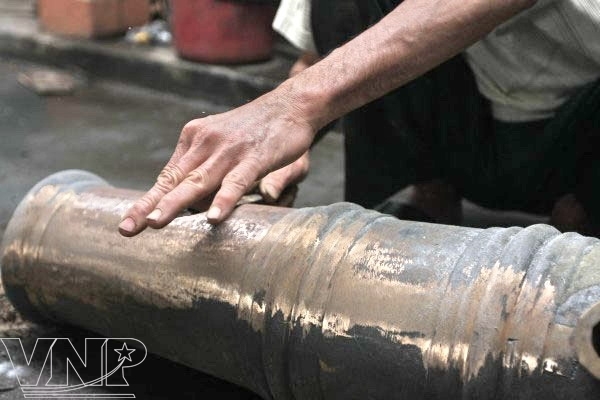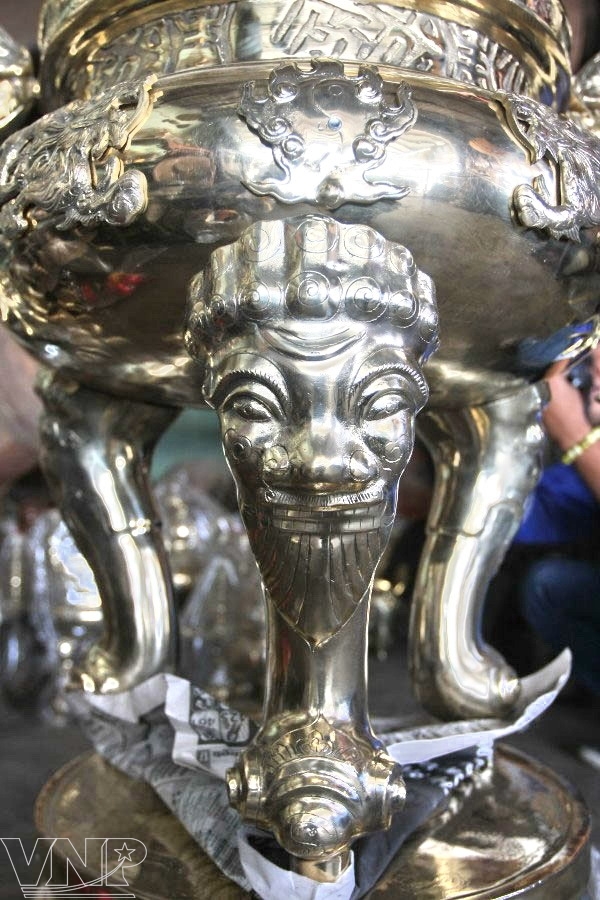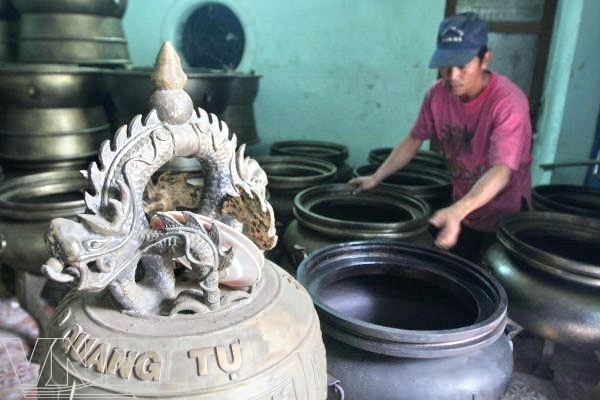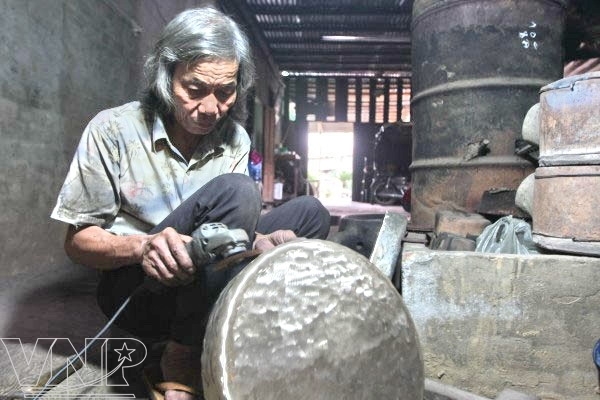Attention ! le Vietnam possède un pouvoir de séduction qui peut provoquer le désir d'y venir...
 Le VIETNAM aujourd'hui
Le VIETNAM aujourd'huiLe Viêt Nam est un pays d'Asie du Sud-Est, entouré à l'Ouest par le Laos et le Cambodge et au Nord par la Chine. Il est bordé par la mer de Chine, le golfe du Tonkin et le golfe de Thaïlande. Il occupe une surface de 331 000 km² (11 fois la Belgique) dont 3 260 km de frontière maritime et possède 4 200 km² d'eaux territoriales. Il a la forme d'un S étiré, dont les extrémités seraient distantes de 1650 km.
La Légende de l'origine
La légende veut que les Vietnamiens soient nés d'un dragon et d'une fée... Le pays lui-même est en forme de dragon, une bande sinueuse dont les côtes s'étendent sur 3000 km. D'ailleurs, la sublime Baie d'Along, avec ses 3000 îles rocheuses et ses grottes-cathédrales, signifie "La baie du dragon descendant". De la poésie pure !
Voici la "véritable" histoire qui m'a été racontée selon la longue tradition orale... Vers 4000 avant JC, le petit fils de la 5è génération de Shennong, Lạc Long Quân, dragon roi de la mer de Đông, épousa une fée, Âu Cơ, fille du roi Đế Lai. Âu Cơ pondit 100 œufs desquels éclorent 100 fils.
Le dragon est une créature liée à la mer et la fée liée à la montagne et l'air, ils se sont ensuite malheureusement séparés, le dragon emmenant cinquante enfants vers la mer, les futurs Kinh et la fée emmenant 50 enfants vers les montagnes, les futurs peuples minoritaires... Les descendants des enfants du dragon et de la fée vivaient en bonne intelligence, chaque enfant étant l'ancêtre d'un royaume séparé. Le premier né devint le roi du Lạc Việt, la première dynastie du Vietnam...
Beaucoup plus tard suite à des attaques de peuples venus du Nord, un noyau d'une quinzaine de rois et reines se réunit alors et élit l'un d'entre d'eux pour être le premier empereur du Nam Việt (« pays des Viêt du Sud »),
Si quelqu'un s'avisait de vous raconter autre chose, ne le croyait surtout pas, ceci est la seule vraie vérité historique !

ENGLISH
Caution! Vietnam has a power of seduction that will make you want to visit it…
VIETNAM today
Viêt Nam is a Southeast Asian country surrounded by Laos and Cambodia to the West and China to the North. It is encircled by the China sea, the Tonkin Gulf and the Gulf of Thailand. It covers a surface of 331,000 km² (11 times Belgium) with a 3,260-km sea border and owns 4,200 km² of territorial waters. It is S-shaped and the distance between its ends reaches 1,650 km.
The origin legend
According to the legend, Vietnamese people are descended from a dragon and a fairy... The country itself has the shape of a dragon. This is a sinuous strip of territory whose coasts spread over 3,000 km. Besides, the magnificent Halong Bay, with its 3,000 rock islands and cathedral-like caves, means “The descending dragon bay”. This is pure poetry!
Here is the “true” story that I have been told according to the long oral tradition… About 4000 BC, the 5th-generation grandson of Shennong, Lạc Long Quân, in dragonkind, king of Đông sea, married a fairy, in birdkind, Âu Cơ, daughter of king Đế Lai. Âu Cơ bore 100 eggs, which hatched into 100 sons.
Because the dragon was a water creature and the fairy was a land and air creature, they decided they could no longer stay together. The dragon father took 50 sons to the coast (future Kinh) and the fairy mother took 50 sons to the highlands (future minority groups). The descendants of the dragon and the fairy’s children lived in harmony because each child was the ancestor of a separate kingdom. The first-born son became the king of Lạc Việt, the first dynasty of Vietnam…
Much later, following attacks by people from the North, a core of around fifteen kings and queens gathered together and elected one of them to become the first emperor of Nam Việt (“the Southern Viêt country”).
If someone dared to tell you something else, don’t believe it, this is the only historical truth.
Viêt Nam is a Southeast Asian country surrounded by Laos and Cambodia to the West and China to the North. It is encircled by the China sea, the Tonkin Gulf and the Gulf of Thailand. It covers a surface of 331,000 km² (11 times Belgium) with a 3,260-km sea border and owns 4,200 km² of territorial waters. It is S-shaped and the distance between its ends reaches 1,650 km.
The origin legend
According to the legend, Vietnamese people are descended from a dragon and a fairy... The country itself has the shape of a dragon. This is a sinuous strip of territory whose coasts spread over 3,000 km. Besides, the magnificent Halong Bay, with its 3,000 rock islands and cathedral-like caves, means “The descending dragon bay”. This is pure poetry!
Here is the “true” story that I have been told according to the long oral tradition… About 4000 BC, the 5th-generation grandson of Shennong, Lạc Long Quân, in dragonkind, king of Đông sea, married a fairy, in birdkind, Âu Cơ, daughter of king Đế Lai. Âu Cơ bore 100 eggs, which hatched into 100 sons.
Because the dragon was a water creature and the fairy was a land and air creature, they decided they could no longer stay together. The dragon father took 50 sons to the coast (future Kinh) and the fairy mother took 50 sons to the highlands (future minority groups). The descendants of the dragon and the fairy’s children lived in harmony because each child was the ancestor of a separate kingdom. The first-born son became the king of Lạc Việt, the first dynasty of Vietnam…
Much later, following attacks by people from the North, a core of around fifteen kings and queens gathered together and elected one of them to become the first emperor of Nam Việt (“the Southern Viêt country”).
If someone dared to tell you something else, don’t believe it, this is the only historical truth.
TIẾNG VIỆT
Hãy cẩn thận ! Đất nước Việt nam có sức quyến rũ đến mức có thể làm cho bạn phải đi thăm nơi ấy...
Việt Nam hôm nay.
Việt Nam là một quốc gia thuộc khu vực Đông Nam Á, phía Tây giáp Lào và Campuchia, phía Bắc giáp với Trung Quốc, được bao quanh bởi Biển Đông, vịnh Bắc Bộ và vịnh Thái Lan. Với tổng diện tích là 331 000 km2 (gấp 11 lần so với nước Bỉ), chiều dài bờ biển là 3 260 km và 4 200 km2 diện tích biển. Việt Nam có hình chữ S và khoảng cách giữa 2 điểm đầu mút là 1650 km.
Truyền thuyết và nguồn gốc :
Theo truyền thuyết, dân tộc Việt Nam là con Rồng cháu Tiên, và cũng chính bản thân nó cũng mang hình dáng của một con rồng, với một dãy đất khúc khuỷu trải dài 3000 km. ngoài ra, sự tuyệt vời của vịnh Hạ Long, với hơn 3000 thạch đảo và hang động, với ý nghĩa “Vịnh nơi rồng đáp xuống”.
Và đây, câu truyện thật mà tôi đã được nghe kể lại theo dòng văn học dân gian. Khoảng 4000 năm trước CN, Lạc Long Quân- con cháu đời thứ 5 của Thần Nông, vua Rồng ở biển Đông, kết hôn cùng nàng Âu Cơ, con gái của vua Đế Lai. Nàng Âu Cơ mang thai và sinh nở ra 100 quả trứng sau đó nở ra 100 người con.
Rồng là hình tượng gắn liền với biển trong khi Tiên lại gắn với núi non, với khí trời. Đó chính là lý do vì sao họ dù rất đau khổ nhưng vẫn phải xa nhau. Năm mươi người con theo cha xuống biển, và bây giờ được gọi là người Kinh, năm mươi người con theo mẹ lên non, và trở thành những dân tộc thiểu số sau này. Con cháu của họ sống hòa hợp với nhau, và mỗi người con trở thành tổ tiên của mỗi vương quốc riêng, người con trai cả, trở thành vua của đất Lạc Việt, triều đại đầu tiên của nước Việt Nam.
Rất lâu sau nhiều cuộc tấn công từ phương Bắc, 15 vị vua và hoàng hậu đã liên kết lại và bầu ra trong số họ, vị vua đầu tiên của Nam Việt (đất nước của người Việt ở phương Nam).
Nếu như ai đó kể lại cho bạn nghe câu chuyện khác đi, thì đừng tin nhé, vì đây mới là câu truyện đúng nhất và là duy nhất.
à voir ce lien!!!!!!!!!!!!!!!!!!!!
